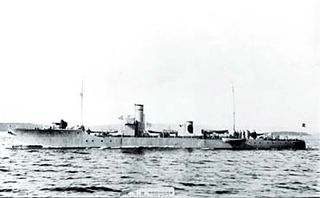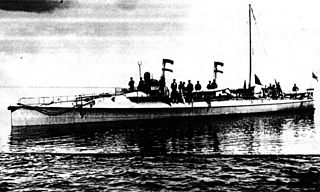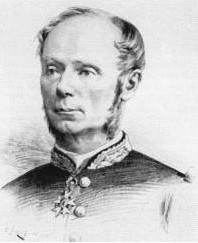This article does not cite any sources .(December 2009) (Learn how and when to remove this template message) |
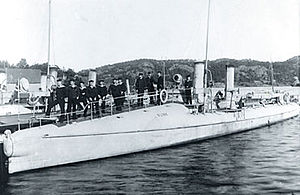 Norweign torpedo boat Lyn, a 2.-class torpedo boat | |
| Class overview | |
|---|---|
| Operators: | |
| Built: | 1892–1894 |
| In commission: | 1880s–1940s |
| Planned: | 41 |
| Completed: | 41 |
| Scrapped: | 41 |
| General characteristics | |
| Type: | Torpedo boat |
| Displacement: | 42 long tons (43 t) |
| Complement: | 11 |
| Armament: | 1 × 37 mm (1.5 in) gun 1 × fixed torpedo tube |
The 2.-class torpedo boat was a designation in the Scandinavian countries for a type of fast steam torpedo boats between 40 tons and 80 tons, in service from the 1880s to after World War I. [1]
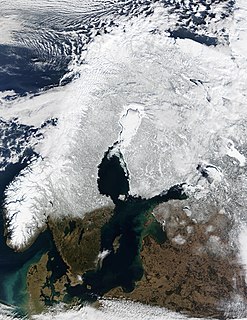
Scandinavia is a region in Northern Europe, with strong historical, cultural, and linguistic ties. The term Scandinavia in local usage covers the three kingdoms of Denmark, Norway, and Sweden. The majority national languages of these three, belong to the Scandinavian dialect continuum, and are mutually intelligible North Germanic languages. In English usage, Scandinavia also sometimes refers to the Scandinavian Peninsula, or to the broader region including Finland and Iceland, which is always known locally as the Nordic countries.

A torpedo boat is a relatively small and fast naval ship designed to carry torpedoes into battle. The first designs rammed enemy ships with explosive spar torpedoes, and later designs launched self-propelled Whitehead torpedoes. They were created to counter battleships and other slow and heavily armed ships by using speed, agility, and the power of their torpedo weapons. A number of inexpensive torpedo boats attacking en masse could overwhelm a larger ship's ability to fight them off using its large but cumbersome guns. An inexpensive fleet of torpedo boats could pose a threat to much larger and more expensive fleets of capital ships, albeit only in the coastal areas to which their small size and limited fuel load restricted them.

World War I, also known as the First World War or the Great War, was a global war originating in Europe that lasted from 28 July 1914 to 11 November 1918. Contemporaneously described as "the war to end all wars", it led to the mobilisation of more than 70 million military personnel, including 60 million Europeans, making it one of the largest wars in history. It is also one of the deadliest conflicts in history, with an estimated nine million combatants and seven million civilian deaths as a direct result of the war, while resulting genocides and the 1918 influenza pandemic caused another 50 to 100 million deaths worldwide.




